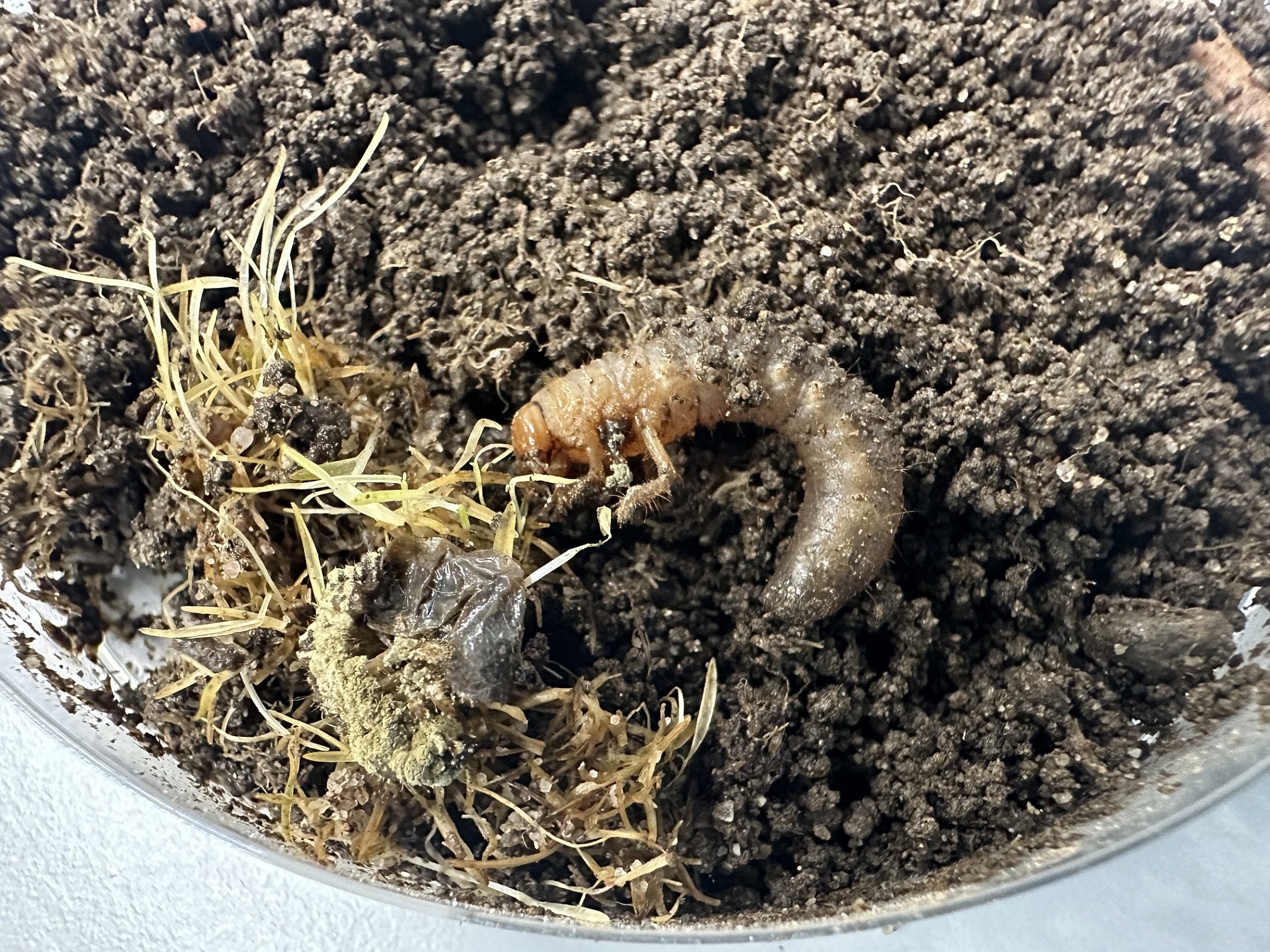What are Metarhizium and Beauveria fungi?
Fungi of the genus Metarhizium and Beauveria occur worldwide and are soil-borne. They are also known as insect-pathogenic fungi; they are thus used for the biological control of insect pests.
Both fungal species usually require a host insect to sporulate in nature. This only happens when the insect has been killed by the fungus. Among other things, it could be shown that Metarhizium could produce 5x 108 spores in a Drosophila-cadaver (fruit fly). The spread of both species takes place asexually. An optimal temperature for both species is between 25 and 30 °C. Since Metarhizium and Beauveria can survive in the soil even without the presence of insects, they have other strategies to ensure their survival in the soil: as saprophytes, rhizosphere colonisers and endophytes.
Different modes of life and benefits for the plant
Metarhizium and Beauveria can switch between different modes of life: On the one hand, they can feed on dead organic matter as a saprophyte, or stay in the close vicinity of plant roots as rhizosphere colonisers and benefit from the nutrients there. On the other hand, they can also live as root endophytes: they then invade the plant root. As a root endophyte, not only the fungus benefits, but also the plant: while Metarhizium and Beauveria receive carbohydrates from the plant, the fungal species can make phosphorus or nitrogen more readily available from sources that the plant Metarhizium/Beauveria and the plant leads to increased plant growth and this is additionally reflected in more vital and resistant plants.
Insects as nutrient source of Metarhizium and Beauveria
Another mode of life of Metarhizium and Beauveria is feeding on insects. This can be in the adult or larval stage of the insect. Infestation and killing of the insect is most rapid in the larval stage, when the cuticle (chitinous carapace) is not yet formed and the membrane (skin) of the larva is still soft. However, the two fungal species are also able to degrade the insect carapace (cuticle) with a combination of enzymes. As a result, the fungal hyphae penetrate the insect body, feed on it and then continue to multiply inside. Metarhizium and Beauveria can therefore infect and kill many different insects, while sparing beneficial and non-target organisms.
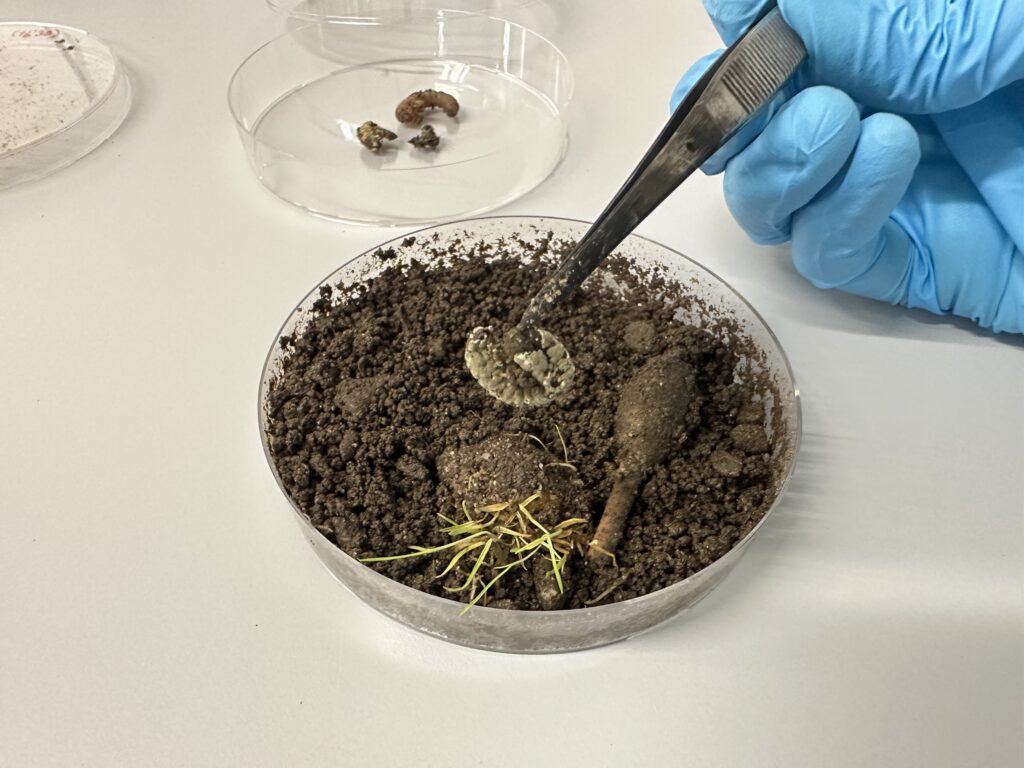
June beetle grub in the petri dish still filled with soil, which was infested by the product Metarhizium MycoSolutions and died.
Source: internal MycoSolutions petri dish experiment
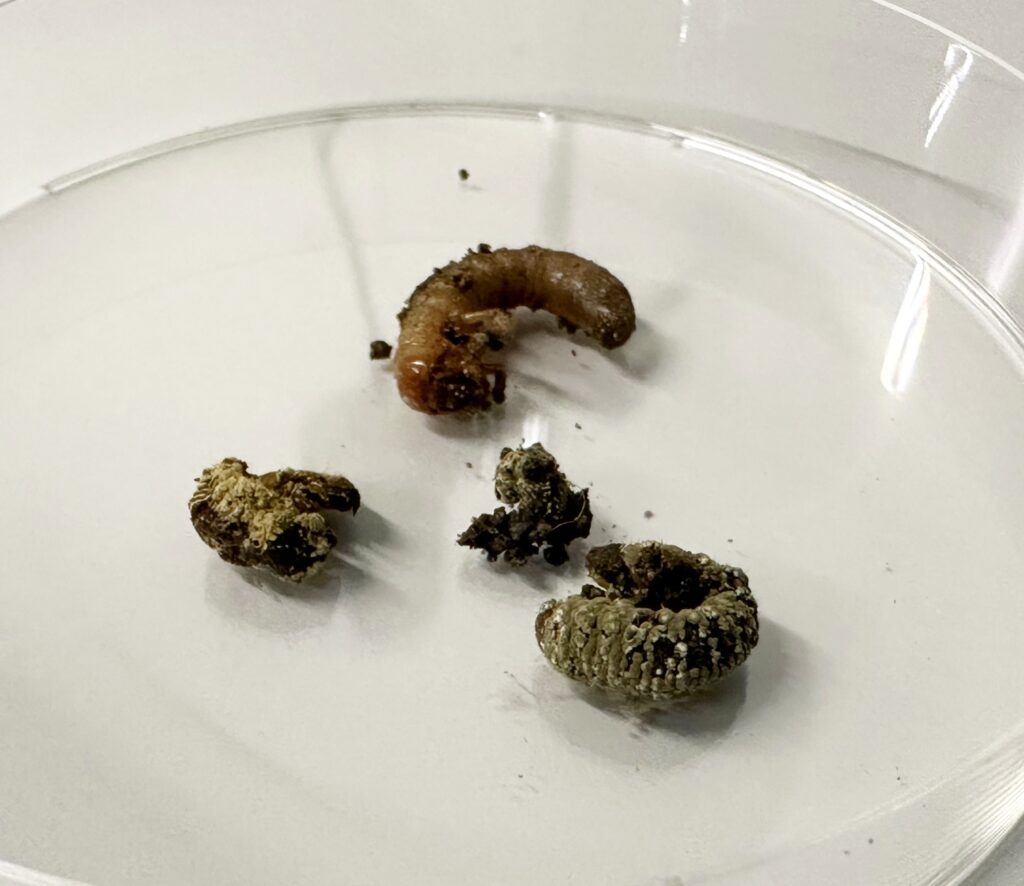
Deadened June beetle grubs that were artificially infected with Metarhizium MycoSolutions.
Source: internal MycoSolutions petri dish experiment
Differences between Metarhizium and Beauveria
Even though the two fungal genera have very similar modes of life, they differ mainly in their host range: while Metarhizium species are mainly known to infest and kill June bug, garden chafer and Japanese beetles (Popillia japonica), the host range of Beauveria is slightly shifted: they infest cockchafer. The host range of Metarhizium is broader and includes more species than Beauveria. In addition, it has been observed in studies that Beauveria species have a fungicidal effect on other fungi such as Rhizoctonia, Fusarium, etc.. This is mostly due to antibiosis or direct competition for food and space.
Most common problem: grubs
Typical problems on lawns of sports grounds and parks as well as gardens, vegetable crops and fruit and berry orchards, agricultural land, vineyards and tree nurseries are grubs. Not only do the grubs themselves cause feeding damage to the plants or cause them to die, they also attract their enemies, animals such as birds, wild boars and badgers. Their search for grubs can therefore cause secondary damage, such as ploughing up the soil.
Grubs are the beetle larvae of cockchafer and June bugs as well as Japanese beetles and garden chafer. One way to control these grubs is to apply fungal cultures such as Metarhizium and Beauveria. They attack the insects in the larval or adult stage and kill them.
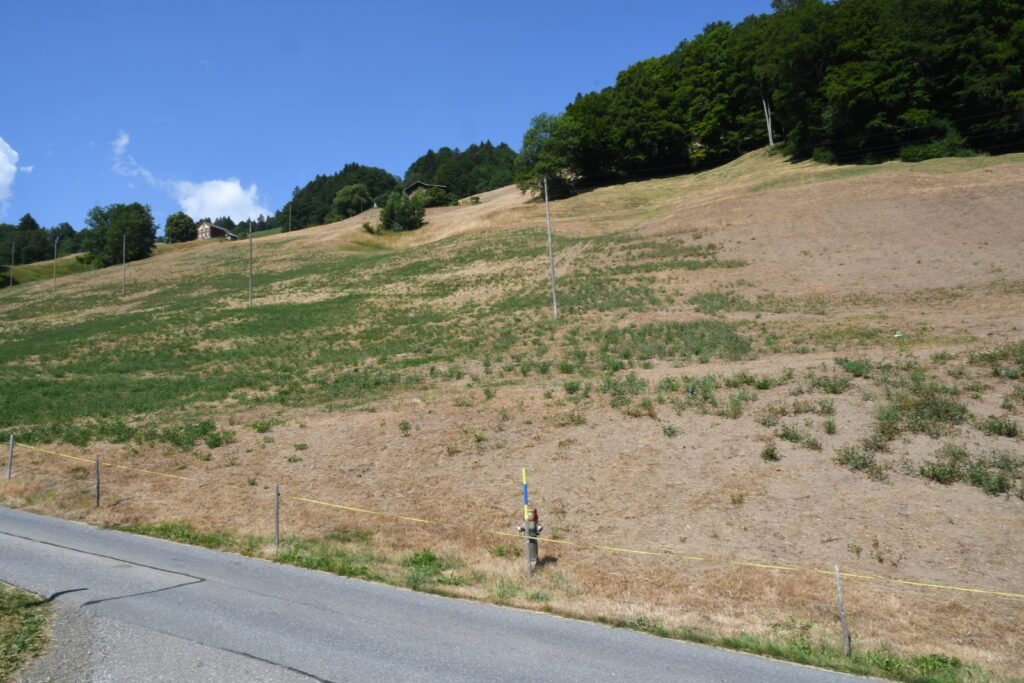
Ruined meadow of cockchafer in the canton of Uri. Source: Christian Schweizer, Agroscope
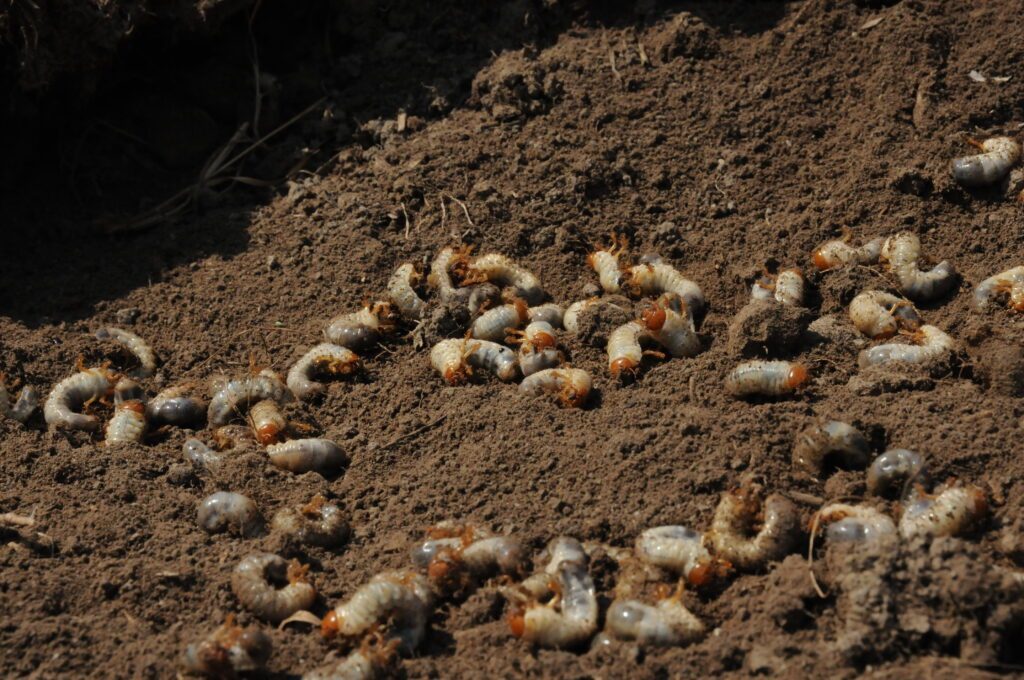
Cockchafer grubs of the ruined meadow area in the canton of Uri. Source: Christian Schweizer, Agroscope

